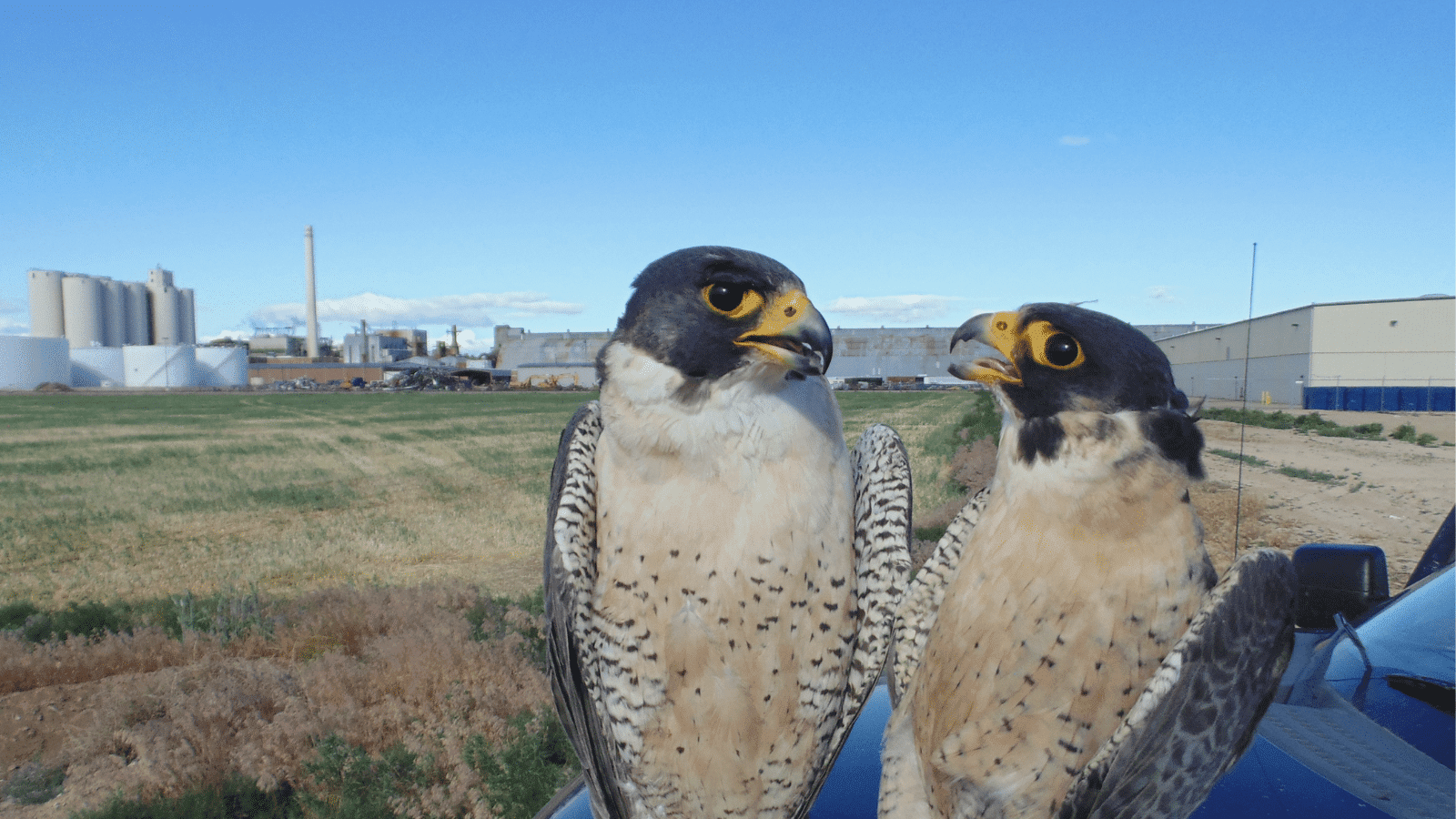Every year since 1990, Peregrine Falcons have been nesting at Amalgamated Sugar’s Nampa facility. The legacy continues this year, as Peregrine Falcons have returned and have been sighted on top of Nampa’s sugar storage silos. The female has been seen laying in the nesting box and appears to be incubating eggs. The Peregrine Falcon territory, of which Amalgamated Sugar’s nesting site is a part, has produced more young than any other territory being monitored in Idaho. Last year, the Peregrine pair nesting at the Nampa facility (seen in the photo above) had four young, all males.
Peregrine Falcons are a bird of prey found all over the world. Typically nesting on high cliff ledges, the Peregrine Falcon can adapt to urban life. Peregrine Falcons can be found in the city, nesting on tall buildings including three locations in the Treasure Valley: downtown Boise on the Century Link building, on the Fiberon building in Meridian, and Amalgamated Sugar’s Nampa facility. Pairs of Peregrine Falcons often return to the same nesting/breeding territory year after year, to raise their young.

Peregrine Falcons are best known for their speed; in a dive after prey the Peregrine Falcon has been recorded at up to 200 miles per hour. The Peregrine Falcon’s diet consists primarily of smaller birds, which they catch by soaring on high air currents and diving down to catch these birds in midair, or by perching up high and waiting for a bird to fly by then flying out and catching it.
The Peregrine Falcon is a migratory raptor, meaning that the Peregrines may not stay in the Treasure Valley year-round. The Peregrine Falcons that nest at Amalgamated Sugar reproduce and raise their young near the Nampa facility, but as winter comes and it gets cold most Peregrines fly south – possibly as far as South America – where it is warmer. Some Peregrines have been recorded to migrate over 5,000 miles.
Experienced bird of prey biologist and master bird bander, James McKinley, monitors the urban Peregrine Falcon population in the Treasure Valley. McKinley has banded the Peregrine adults and nestlings at Amalgamated Sugar in the past and plans to continue to do so for many years to come. Banding Peregrine Falcons involves placing a silver band (like a bracelet) on one leg and a colored two letter/number band on the other. The bands do not harm or hinder the birds and are very useful to scientists.
There are many advantages to banding the Peregrine Falcons nesting at Amalgamated Sugar. Banding Peregrines helps scientists keep track of individual birds and where they nest, as well as assist in tracking population numbers to help ensure that the Peregrine Falcon remains off the endangered species list.
Amalgamated Sugar is proud to provide a home for these remarkable birds of prey, and through the Company’s sustainability mission, will to continue to do so for generations of Peregrine Falcons to come.





